This essay was originally published in The Public Domain Review under a Creative Commons License. Please see their rules for reuse.
Celebrated for his innovative wit, Oscar Wilde and the notion of originality are common bedfellows. The pairing, however, is not without its complications. Joseph Bristow and Rebecca N. Mitchell explore the claims of plagiarism that dogged Wilde’s career, particularly as regards his relationship with that other great figure of late-19th-century Decadence, the American painter James McNeill Whistler.

“[W]hen I see a monstrous tulip with four wonderful petals in someone else’s garden, I am impelled to grow a monstrous tulip with five wonderful petals, but that is no reason why someone should grow a tulip with only three petals.”
– Oscar Wilde1
Charges of Oscar Wilde’s plagiarism are certainly not new; they have their origins in his contemporaries’ sharp criticism of his first published volume, Poems (1881). Even if they did not claim that any of his poetry had been stolen verbatim from the Romantics and Pre-Raphaelites whose work he adored, commentators grasped that much of his work was highly derivative. The Saturday Review was fairly typical of the critical reception: “The book is not without traces of cleverness, but it is marred everywhere by imitation, insincerity, and bad taste.”2 At the same time, the Oxford Union famously rejected on similar grounds the very copy of Poems that its secretary had solicited from Wilde; at the Oxford Union, the undergraduate Oliver Elton — later to become a renowned literary historian — asserted that Wilde’s poems were “not by their putative father at all, but by a number of better-known and more deservedly reputed authors.”3 Modern scholars have on occasion rebutted Elton’s claim, suggesting that disdain for Wilde’s developing poetic voice or even downright jealousy motivated the outcry.4 Nevertheless, the stigma attached to the reception of Poems has stuck firmly to that work and to many others in Wilde’s oeuvre.
In the late twentieth century, his presumed unoriginality appeared to one scholar as a symptom of his constitutional indolence: “[O]ne feels that Wilde was more than usually immature in his slavish regurgitation of diverse and unassimilated poetic tags; one is impatient with his lazy refusal to replace the shorthand of quotation by a carefully thought-out phrasing of his own; and one is shocked at the effrontery of a would-be literary imposter.”5 Many observers dismissed the idea that Wilde’s youthful identification with his Romantic and Pre-Raphaelite poetic idols was so strong that his devotion to them — and not a desire to steal from them — resulted in his apparent copying of their writings. And in a connected point, while charges of affectation were frequently applied to Wilde’s aesthetic mannerisms, it seems that few took seriously the idea that the lassitude or nonchalance he embodied was itself affected; his languor was (like the “Double First” degree he earned at Oxford even as he insisted to friends that he would be lucky to escape with a third) the product of intense — if skillfully concealed — effort.
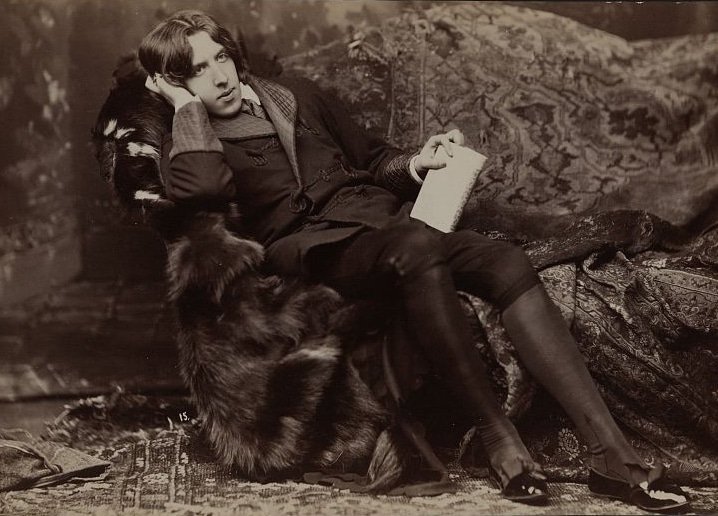
From the early 1880s onward Wilde found it hard to escape the entrenched belief that he happily filched other people’s ideas. By far the most controversial conflict in Wilde’s career arose from criticisms that the socially competitive painter James McNeill Whistler made about Wilde’s unacknowledged appropriation of his bon mots. The rivalry between the older American artist and the younger Irish author, who moved in similar fashionable circles, developed through a spirited if eventually bitter exchange in the periodical press. On February 20, 1885, Whistler delivered his notorious “Ten O’ Clock Lecture”, whose title indicates the attention-grabbing late-evening slot he chose to deliver his thoughts on art. In particular, Whistler attacked the modern critic: “the unattached writer” who “has become the middleman in the matter of Art”.6 Such an arbiter of taste, in Whistler’s view, could not see the “painter’s poetry” in the artwork, since the critic treated it as he would “a novel — a history — or an anecdote.”7
Wilde retorted by objecting to Whistler’s belief that only the artist can comprehend aesthetic beauty. “An artist”, Wilde commented, “is not an isolated fact; he is the resultant of a certain milieu and a certain entourage, and can no more be born of a nation that is devoid of any sense of beauty than a fig can grow from a thorn or a rose blossom from a thistle.”8 In other words, Wilde claimed that cultural traditions created the conditions in which the finest types of art could flourish. Moreover, he asserted that in these modern times, “an artist will find beauty in ugliness, le beau dans l’horrible.”9 Challenged, Whistler responded briskly in the World, stating that Wilde had implied that it was left to modern poets to find “‘l’horrible’ dans ’le beau’”.10 In turn, Wilde sparred back that Whistler had scarcely understood his critique: “Be warned this time, James; and remain, as I do, incomprehensible. To be great is to be misunderstood.”11 With intentional archness, in this last line Wilde drove home his point by quoting — though not explicitly acknowledging — Emerson’s famous essay, “Self-Reliance” (1840)12, thus further appropriating another person’s wisdom to speak eloquently on his behalf.
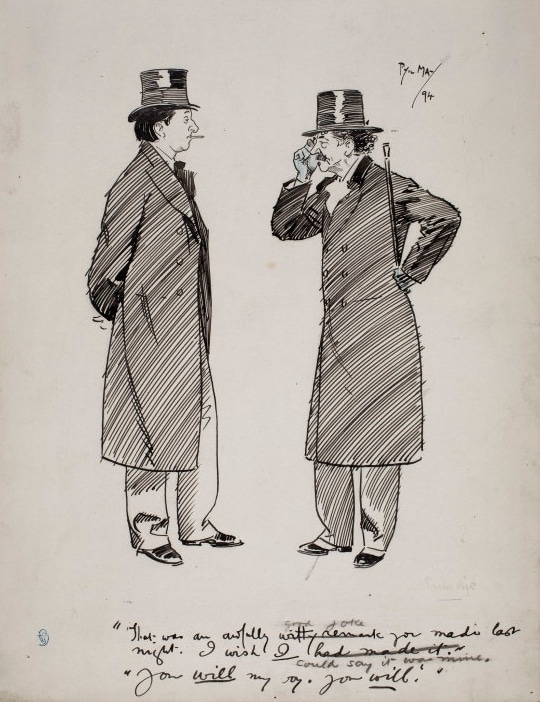
Toward the end of 1886, Whistler’s temper flared up once more when he detected Wilde’s flagrant appropriation of some of his phrases. “What has Oscar in common with Art? except that he dines at our tables, and picks from our platters the plums for the pudding he peddles in the provinces.”13 “Oscar,” Whistler’s barbs continued, “has the courage of the opinions . . . of others!”14
Matters did not rest there. Years later, the American painter again grew vociferous when he read Herbert Vivian’s reminiscences, which appeared in the London Sun in the autumn of 1889. Vivian recalled a lecture that Wilde delivered almost seven years before, for which Whistler had “in good fellowship crammed him”. In the lecture, Wilde wryly addressed Whistler as “Butterfly” (Whistler commonly signed his artwork with a stylized butterfly) but failed to give the elder artist credit for his assistance.15 Vivian also noted that in “The Decay of Lying”, published in the Nineteenth Century in January 1889, Wilde had incorporated, without acknowledging Whistler as the source, the artist’s claim that he had “the courage of the opinions . . . of others”.16 Wilde’s alleged offense occurs early in the essay, when his main speaker in this critical dialogue argues that the modern novelist has lost the ability to lie and simply “presents us with dull facts under the guise of fiction”:
He has not even the courage of other people’s ideas, but insists on going directly to life for everything, and ultimately, between encyclopaedias and personal experience, he comes to the ground, having drawn his types from the family circle or from the weekly washerwoman, and having acquired an amount of useful information from which never, even in his most meditative moments, can he thoroughly free himself.17
In Whistler’s eyes, the irony could not have been more blatant. From Whistler’s perspective, Wilde could hardly argue for artistic originality in the novel when his criticism of such repetitive and predictable fiction relied on words that he had stolen from his erstwhile master: Whistler himself. Whistler went so far as to call Wilde the criminal “arch-imposter”, the “detected plagiarist”, and the “all-pervading plagiarist” — one who would have violated in America the “Law of ’84”.18 Yet, to Wilde, Whistler’s “shrill shrieks of plagiarism” were the pitiful sign of “silly vanity or incompetent mediocrity”.19
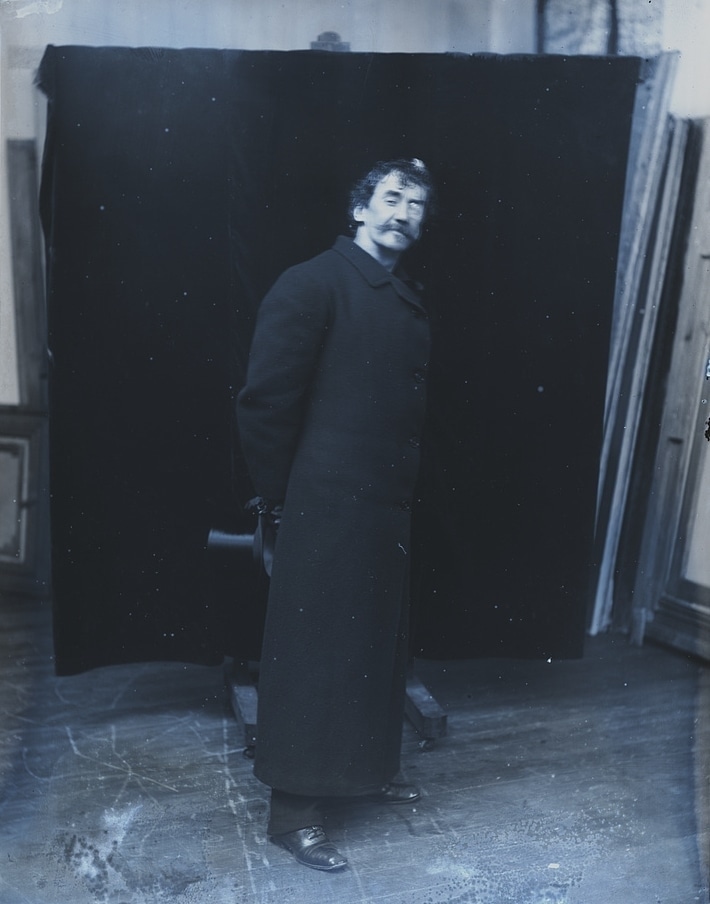
No matter how petty Whistler’s gripes may appear, they illuminate the difficulties involved in casting Wilde in the role of a deceitful plagiarist. Whistler described his holding forth at dinner as a type of “cramming”, positioning himself as the workaday instructor of the younger man, raising pressing questions about the connection between pedagogy and plagiarism: Can the teacher accuse his student of this crime because the pupil has parroted the content of the instruction? Is not one’s goal, when preparing intensively for an examination, the ability to duplicate with as much fidelity as possible the information studied?
Looked at critically, Whistler’s self-important accusation against Wilde may well appear as an excuse to generate a decidedly public feud, one that Whistler exploited to keep himself in the public eye. Nonetheless, Whistler’s insults helped sustain the broad allegation that Wilde’s was not an original mind. Much later, Frank Harris — who developed a close relationship with Wilde as editor and friend — reiterated the belief that Whistler had done more to shape Wilde’s wit than any other figure: “Of all the personal influences which went into the moulding of Oscar Wilde’s talent, that of Whistler was by far the most important; Whistler taught him the value of wit and the power a consciousness of genius and a knowledge of men lend to the artist.” In Harris’ view, Wilde enjoyed great success as a writer because of his “great ability” as well as “inordinate vanity” — qualities, it would seem, that no charge of plagiarism could stifle.20
This success did not inoculate Wilde from claims that his work was unoriginal. In early 1892, when his earliest Society comedy, Lady Windermere’s Fan, won many plaudits at the St James’s Theatre, Wilde’s apparent borrowings again incensed critics. The fairly liberal-minded A. B. Walkley, for example, claimed that the “staleness of the incidents” came “from half a dozen French plays”, and he observed that Wilde’s female protagonist was “a guileless young bride” who resembled “M. Dumas’s Françillon”.21 Meanwhile, as far as Walkley could tell, another of Wilde’s characters, Mrs. Erlynne, appeared to have stepped out from a further play by Dumas fils, L’Étrangère (1876). Elsewhere, one commentator found the drama to be a “not too ingenious blend of the Eden of Mr. Edgar Saltus, with the Idler of Mr. Haddon Chambers,” together with that other well-known drama of adultery, Françillon (1887), once more put in for good measure.22 Not everyone agreed these were capital offenses. As Frederick Wedmore perceived it, such borrowings were standard fare in the theatre, a comment supported by the sheer number of texts cited as sources for Wilde’s play. In his view, even if the fan — Wilde’s major stage prop — had a clear antecedent in Haddon’s Idler (1890), it had “hardly . . . occurred to the least intelligent to suggest plagiarism”.23
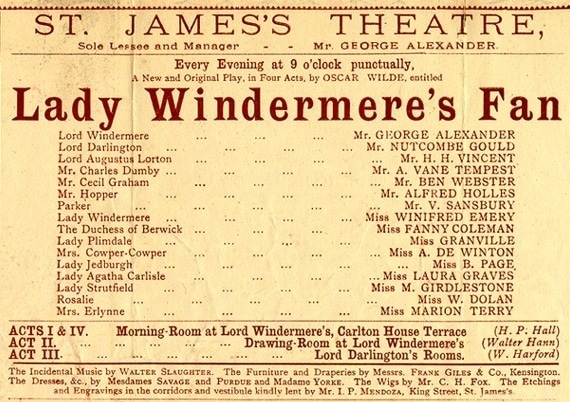
How, then, to make sense of these borrowings? Over the years, the amassing scholarly research on Wilde’s later works showed that many passages echo writings that were essential to his intellectual growth. These inquiries disclosed that parts of “The Critic as Artist”, for example, repeat ideas in Pater’s Studies in the History of the Renaissance.24 The same might be said of many sections of the dialogue where Lord Henry Wotton speaks in The Picture of Dorian Gray.25 Yet Wilde scarcely concealed the influence that Pater’s Renaissance had exerted on him since his “undergraduate days at Oxford”, as he freely stated in his review of Pater’s Appreciations (1889):
Mr. Pater’s essays became to me “the golden book of spirit and sense, the holy writ of beauty.” They are still this to me. It is possible, of course, that I may exaggerate about them. I certainly hope that I do; for where there is no exaggeration there is no love, and where there is no love there is no understanding.26
As Wilde suggested, to be impassioned about another writer’s work created for him the possibility of understanding his source of inspiration critically. In any case, Wilde’s frequent evocations of Paterian phrases hardly resembled theft.27 Consider the many echoes of Pater’s Renaissance that are detectable in Wilde’s sole novel. It would be difficult to claim that Lord Henry’s advocacy of the “New Hedonism”, for example, evinced the author’s intent to steal surreptitiously from what was a fully recognizable source. The advice Lord Henry gives to Dorian Gray about the need to pursue pleasure, which sounds similar to sentences in Pater’s “Conclusion” to his 1873 study, has terrible consequences — ones that are entirely contrary to Pater’s insistence on the “desire for beauty” as the “fruit of a quickened, multiplied consciousness”.28 Areas more vulnerable to allegations of plagiarism would be the extensive sections that paraphrase entries from South Kensington Museum catalogues, a French book on embroidery and lace, and information gleaned from John Addington Symonds’ five-volume Renaissance in Italy (1875–1886).29 These exhaustive lists — which detail the artifacts, instruments, and vestments that capture Dorian Gray’s attention — also evoke the kinds of objets d’art that recur in J.-K. Huysmans’ anti-realist novel about an aesthetic collector, À rebours (1884), a well-known work of fiction that counted among several French sources that at least one indignant contemporary reader believed Wilde had plundered.30
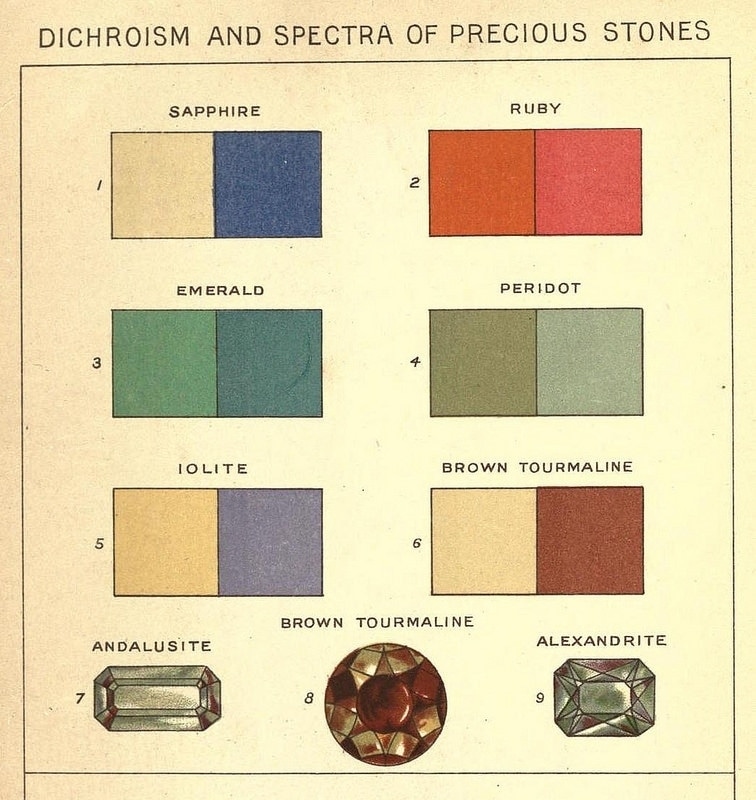
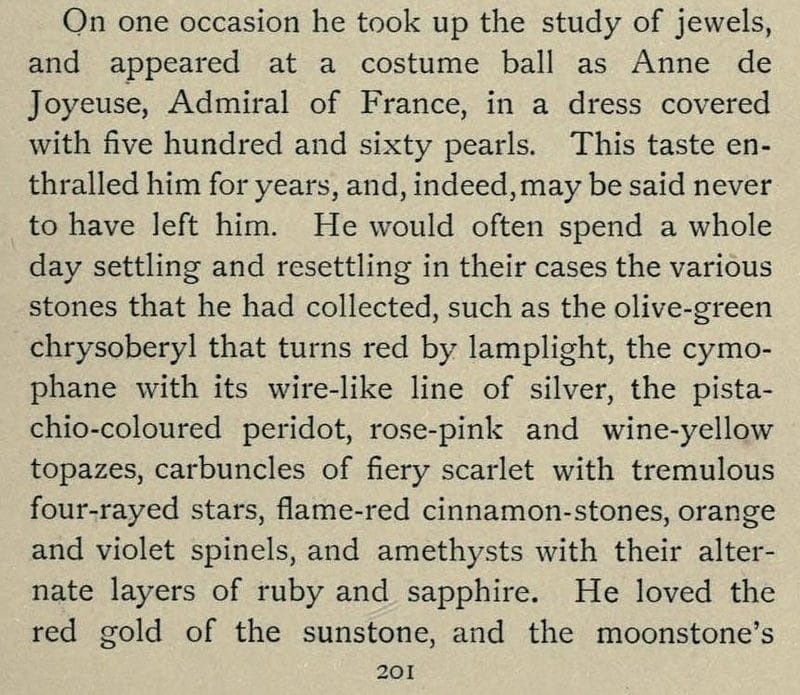
Still, these various allegations of Wilde’s fearless thieving of other writers’ ideas, phrases, and situations stand in contradistinction to his carefully elaborated ideas on literary borrowing, criminality, and creative expression. In his reviews from the 1880s, Wilde addressed uninspired borrowing as a demonstration not of an author’s artistic integrity or work ethic, but as an indication of poor taste. That is to say, both the writers from whom an author chooses to poach and the finesse with which he commits the act create the proper grounds for assessing this type of theft. His commentary in the popular Pall Mall Gazette on two works of poetry reveals this distinction: the one volume ostensibly written by “Two Tramps”, and the other by H. C. Irwin. Here Wilde considered the permissibility of poetic borrowing. By using language pulled directly from his “Chatterton” notebook (another text that has generated charges of plagiarism), he took the “two tramps” to task for conflating the “defensible pilfering from hen roosts” with the “indefensible pilfering from poets”.31 “[W]e feel”, Wilde wrote, “that as bad as poultry-snatching is, plagiarism is worse. ‘Facilis descensus Averno!’ From highway robbery and crimes of violence one sinks gradually to literary petty larceny.”32
Earlier in his review, Wilde had excused the authors, even praised them, for trying to “annex the domain of the painter” through their aesthetic choices in paper color and binding, but here he suggested that plagiarism was a transgression far worse than that.33 One reason was that, although the appropriation of colors from the painters led to beauty in the finished product, the plagiarized lines simply resulted in terrible poetry: the difference between the five-petaled tulip and the three-petaled tulip. This contrast was heightened through Wilde’s positive assessment of Irwin’s collection, which, as he put it, “gains her colour effect from the poet not from the publisher.”34 In Irwin’s poems, Wilde certainly witnessed traces of Matthew Arnold’s works, but he nonetheless praised Irwin for “studying a fine poet without stealing from him, a very difficult thing to do, and though many of the reeds through which he blows have been touched by other lips, yet he is able to draw new music from them.”35 In other words, even when learning lessons from a master it was the case that the epigone might transform evident echoes of his idol into innovative art. Such is the meaning that underscores the epigraph to this essay; to transmute and to improve source material, in Wilde’s view, was a perfectly legitimate approach to literary creativity.
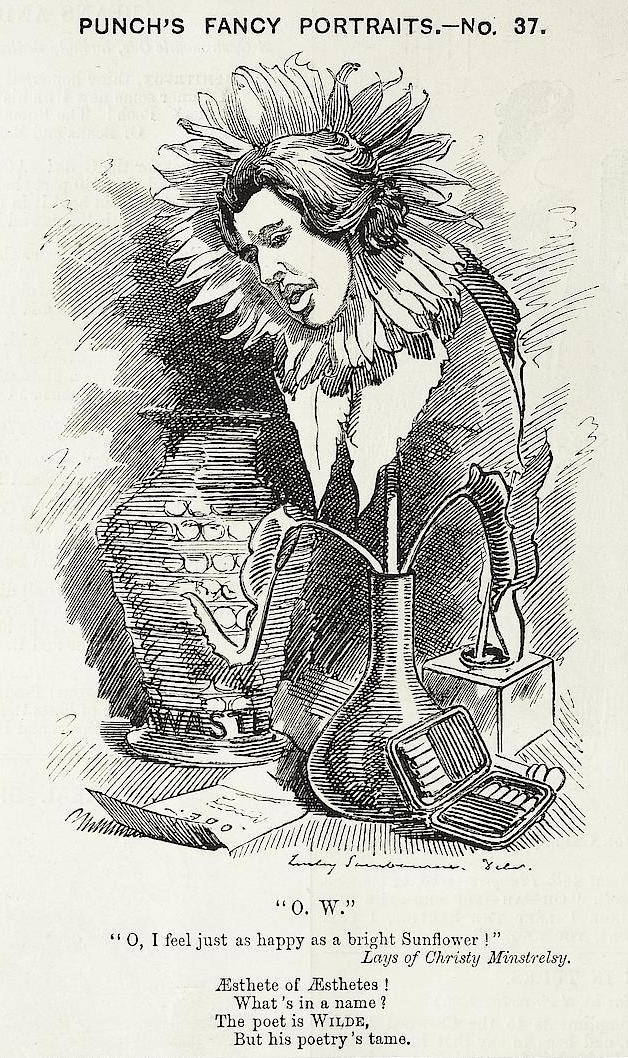
One of Wilde’s last, and most fascinating, direct engagements with plagiarism occurred in a series of letters published in the Pall Mall Gazette under the heading, “The Ethics of Journalism”.36 The episode began on August 5, 1894, with the publication of a poem, “The Shamrock”, in the London-based Weekly Sun, which the paper erroneously attributed to Wilde. Soon thereafter, the poem was reprinted in the New York Sun, where an alert reader recognized the poem as one that “Helena Calahan” had previously published, and he demanded an explanation from Wilde in a letter to the London paper.
The Weekly Sun’s editor, T. P. O’Connor (whose paper Wilde clearly disliked), pressed Wilde for a response, which came in a letter the following month to the Pall Mall Gazette.37 Wilde noted the ridiculousness of the situation. He faced an accusation of plagiarism from an editor who had published a poem under his name without having verified the authorship of the work, much less having asked for his — the (ostensible) author’s — permission to publish it. Wilde referred to “The Shamrock” derisively as “some doggerel verses”, which raised the serious question of authorial and editorial taste in addition to the “ethics of modern journalism”.38
A letter of rebuttal from the Weekly Sun’s assistant editor quickly appeared in the Pall Mall Gazette. By prefacing his comments first with the acknowledgement that the editors “regret exceedingly the suggestion of plagiarism”, the editor explained the circumstance of the attribution: the poem had arrived in the mail with a letter ascribing it to Wilde, and so the Weekly Sun published it under Wilde’s name. Perhaps because of the impeachability of this explanation, the editor then pivoted to debates about taste, alternately defending the poem’s “melodic charm” and “pure and exalted patriotism” and suggesting that the editors’ willingness to attribute the poem to Wilde was an act of generosity:
So conspicuous, indeed, was its elevation of tone that we were reluctant to believe it could have been the product of a mind like Mr. Oscar Wilde’s, and were driven to take refuge in the charitable belief that it belonged to the period of a forgotten and generous youth.39
A final missive from Wilde closed the conversation. He critiqued the Weekly Sun for sloppy editorial practices and blurring the boundaries between ethics and taste. If, he maintained, the paper actually believed the “fifth-rate verses” to be his, its staff would have asked his permission to publish.40 “[N]o respectable editor”, wrote Wilde (himself a former periodical editor), “would dream of printing and publishing a man’s work without first obtaining his consent.”41
We take from this episode a snapshot of Wilde’s position in the press. Since Wilde had long been a target for charges of plagiarism, the unscrupulous Weekly Sun suspended editorial integrity in order to catalyze once more a dated public conversation about his artistic inferiority. Moreover, the assistant editor’s letter intimated that the author’s Irish background should be considered the source of this embarrassment. It is remarkable, even amid all of this sniping, that in the Weekly Sun’s letter to Pall Mall Gazette, in which the assistant editor admitted his fault and apologized for accusing Wilde of plagiarism, a postscript serves as an unabashed advertisement for his own newspaper: “We are giving a number of letters bearing upon ‘The Shamrock’ in our next issue, together with the text of the poem and a letter from its actual author.”[^42] Such a self-serving apology, clearly enough, sharpens the belief that certain areas of the late Victorian press had little to lose when intervening in polemics about literary plagiarism.
Joseph Bristow is Distinguished Professor of English at the University of California, Los Angeles. Rebecca N. Mitchell is Lecturer in English at the University of Birmingham, England. She was previously Associate Professor of English at the University of Texas–Pan American. This essay has been partly adapted from Joseph Bristow and Rebecca N. Mitchell, Oscar Wilde’s Chatterton: Romanticism, Literary History, and the Art of Forgery (Yale University Press, 2015).
Public Domain Works
Further Reading
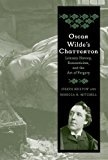
Oscar Wilde’s Chatterton: Literary History, Romanticism, and the Art of Forgery (Yale University Press, 2015) by Joseph Bristow and Rebecca N. Mitchell
An exploration of Wilde’s fascination with the eighteenth-century forger Thomas Chatterton, who tragically took his life at the age of seventeen.
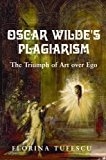
Oscar Wilde’s Plagiarism: The Triumph of Art over Ego (Irish Academic Press, 2011) by Florina Tufescu
An interpretation of Wilde’s plagiarism and of its impact on Joyce, Borges, Gide, et al., as well as a revelation of the plagiaristic, counter-romantic tradition from Poe to Ackroyd.
Recorded by Robert Ross, “Introduction”, in Oscar Wilde, Salome (1912), xxiii.↩
Anon., “Recent Poetry”, Saturday Review, 23 July 1881: 118; in Karl Beckson, ed., Oscar Wilde: The Critical Heritage (London: Routledge and Kegan Paul, 1970), 37.↩
Henry Newbolt, My World as in My Time (London: Faber and Faber, 1932), 96.↩
See Merlin Holland, “Plagiarist, or Pioneer?” in Rediscovering Oscar Wilde, ed. George Sandulescu, (Gerrards Cross: Colin Smythe, 1994), 199. Richard Ellmann states that the proceedings at the Oxford Union had a “Swiftian lunacy” (Oscar Wilde [New York: Knopf, 1988], 146). The Union voted against the acceptance of Wilde’s volume by a fairly narrow margin: 188 against 180 votes. Elton proceeded to a distinguished career as a university professor of English; he became best known for his Survey of English Literature, 1780–1830, 2 vols. (London: Edward Arnold, 1912).↩
Averil Gardner, “‘Literary Petty Larceny’: Plagiarism in Oscar Wilde’s Early Poetry”, English Studies in Canada 8 (1982): 52.↩
James Abbott McNeill Whistler, “Mr. Whistler’s ‘Ten O’ Clock’”, in Whistler, The Gentle Art of Making Enemies, New ed. (London: Heinemann, 1892), 146.↩
Whistler, The Gentle Art of Making Enemies, 146-47.↩
Wilde, “Mr. Whistler’s Ten O’Clock”, Pall Mall Gazette, 21 February 1885: 1–2; in Journalism Part I, 6:35.↩
Wilde, in Journalism Part I, 6:35.↩
Whistler, “Tenderness in Tite Street”, World, 25 February 1885: 14; in The Gentle Art of Making Enemies, 162.↩
Wilde, “To the Painter”, World, 25 February 1885: 14; in The Gentle Art of Making Enemies, 163; and in Complete Letters, 250.↩
In “Self-Reliance”, Emerson writes: “A foolish consistency is the hobgoblin of little minds, adored by little statesmen and philosophers and divines. With consistency a great soul has simply nothing to do…. To be great is to be misunderstood.” Essays: First Series in The Collected Works of Ralph Waldo Emerson, ed. Joseph Ferguson, Alfred F. Carr, and Jean Ferguson (Cambridge, MA: Harvard University Press, 1980), 2:33–34.↩
James McNeill Whistler, “To the Committee of the ‘National Art Exhibition”’, World, 17 November 1886, 16; in The Gentle Art of Making Enemies, 164.↩
Whistler, “To the Committee of the ‘National Art Exhibition’”, in The Gentle Art of Making Enemies, 164.↩
Whistler, “The Habit of Second Natures”, Truth, 2 January 1890, 4-5; in The Gentle Art of Making Enemies, 237; and in Wilde, Complete Letters, 418.↩
Whistler, “The Habit of Second Natures”, in The Gentle Art of Making Enemies, 237; and in Wilde, Complete Letters, 419.↩
Wilde, “The Decay of Lying”, in Wilde, Criticism, ed. Guy, 75–76. Zola writes of Flaubert’s Madame Bovary, “c’est un document humain d’une vérité universelle, une page arrachée de l’histoire de notre société” (“It is a human document of the universal truth, a page torn from the history of our society”): Les Romanciers Naturalistes (Paris: Charpentier, 1893), 143. “[U]ne ouvre d’art est un coin de la creation vu à travers un tempérament”) (“a work of art is a corner of creation seen through a temperament”): Émile Zola, “M. H. Taine, Artiste,” in Mes haines: Causeries littéraires et artistiques (Paris: Charpentier, 1879), 229.↩
Whistler, “The Habit of Second Natures”, in The Gentle Art of Making Enemies, 236; and in Wilde, Complete Letters, 418. Whistler’s reference to the “Law of ’84” is presumably an ironic one, since it implicitly alludes to Burrow-Giles Lithographic Co. v. Sarony (1884), in which Napoleon Sarony, whose studio retained copyright over all of the photographs accompanying Wilde’s 1882 lecture tour, sued because he believed his rights to the images had been violated by a company selling unauthorized lithographs of them. The Supreme Court judged in Sarony’s favor.↩
Wilde, “In the Market Place”, Truth, 9 January 1890, 51; in Whistler, The Gentle Art of Making Enemies, 239; and in Wilde, Complete Letters, 419.↩
Frank Harris, Contemporary Portraits (London: Methuen, 1915), 104.↩
A. B. Walkley, Review of Lady Windermere’s Fan, Speaker, 27 February 1892: 257–58; in Beckson, ed., Oscar Wilde: The Critical Heritage, 120. Dumas fils’ Françillon, in which the husband consorts with a courtesan, and the young wife responds by keeping company with another man, has arguably a much more risk-taking plot than Lady Windermere’s Fan.↩
[Anon.,] Review of Lady Windermere’s Fan, Black and White, 27 February 1892: 264; in Beckson, ed., Oscar Wilde: The Critical Heritage, 127.↩
Frederick Wedmore, “The Stage”, Academy, 5 March 1892: 236–37; in Beckson, ed., Oscar Wilde: The Critical Heritage, 128.↩
See, for example, the main text and the editorial commentary on a passage from ’The Critic as Artist”, in Wilde, Criticism, ed. Guy, 176 and 499-500.↩
On the echoes of Pater’s writings in Wilde’s novel, see The Picture of Dorian Gray, Joseph Bristow, ed., The Complete Works of Oscar Wilde (Oxford: Oxford University Press, 2005), 3:359–62.↩
Wilde, “Mr. Pater’s Last Volume”, Speaker, 22 March 1890: 319-20; in Journalism Part II, 7:243.↩
For more on parsing the distinction between allusion and plagiarism, see Christopher Ricks, Allusion to the Poets (Oxford: Oxford University Press, 2002), and Harold Bloom, The Anxiety of Influence (New York: Oxford University Press, 1973).↩
Pater, “Conclusion”, in The Renaissance: Studies in Art and Poetry, The 1894 Text, ed. Donald L. Hill (Berkeley, CA: University of California Press, 1980), 190.↩
For Wilde’s adaptation of these and other sources in his novel, see Wilde, The Picture of Dorian Gray, ed. Bristow, 398–419.↩
“Mr. Wilde resembles the hero of his own romance; he has been unable to ‘free himself from the memory’ of certain books” (“G.,” “The Long Arm of Coincidence,” Scots Observer, 6 September 1890, 410). This critic also detects similarities between sections of Wilde novel and Honoré de Balzac’s short story, “Massimilla Doni” (1837-39) and Nathaniel Hawthorne’s “Prophetic Pictures”, which was first collected in Twice-Told Tales (1837).↩
Wilde, “The Poets’ Corner”, in Journalism Part I, 6:96. For a comprehensive discussion of Wilde’s “Chatterton” notebook, see Joseph Bristow and Rebecca N. Mitchell, Oscar Wilde’s Chatterton: Literary History, Romanticism, and the Art of Forgery (Yale: Yale University Press, 2015), from which this article is adapted.↩
Wilde, “The Poets’ Corner”, in Journalism Part I, 6: 96. The Latin translates as “easy is the descent”, and it comes from Virgil, Aeneid, VI, line 126.↩
Wilde, “The Poets’ Corner”, in Journalism Part I, 6:96.↩
Wilde, “The Poets’ Corner”, in Journalism Part I, 6:96.↩
Wilde, “The Poets’ Corner”, in Journalism Part I, 6:97. On his aspect of Wilde’s review, Jerome H. Buckley, “Echo and Artifice: The Poetry of Oscar Wilde,” Victorian Poetry 28 (1990): 19.↩
For a discussion of the events surrounding “The Shamrock”, see Wilde, Decorative Art in America, ed. Richard Butler Glaenzer (New York: Brentano’s, 1906), 265–267.↩
Wilde realized that there was little point in sending out review copies of the French edition of Salomé (1893) to reviewers who were likely to express hostility toward his work; in early February 1893, he informed his publisher, John Lane, “pray remember it was agreed that no copy of Salomé is to be sent either to the National Observer or to Mr. O’Connor’s Sunday Sun” (Complete Letters, 547). One of Wilde’s archenemies, W. E. Henley, edited the National Observer.↩
Wilde, “The Ethics of Journalism”, “To the Editor of the Pall Mall Gazette”, Pall Mall Gazette, 20 September 1894: 3; in Collected Works, 14:172; and in Complete Letters, 611.↩
[Anon.,] “The Ethics of Journalism”, Pall Mall Gazette, 22 September 1894: 3; and in Wilde, Complete Letters, 614. Millard observes that “The Shamrock” was reprinted, with Wilde’s name, in the Manchester New Weekly: A Journal with Illustrations, 11 August 1893, 3 (Mason [Millard], Bibliography, annotated copy, 3 vols. I, facing 162, Clark Library PR5822 A1M64bi 1914a).↩
Wilde, “The Ethics of Journalism”, “To the Editor of the Pall Mall Gazette”, 25 September 1894: 3; in Collected Works, 14:173; and in Complete Letters, 614.↩
Wilde, Collected Works, 14:173, and Complete Letters, 614.↩